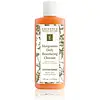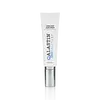What's inside
What's inside
 Key Ingredients
Key Ingredients

 Benefits
Benefits

 Concerns
Concerns

 Ingredients Side-by-side
Ingredients Side-by-side

Prunus Armeniaca Fruit
AstringentAloe Barbadensis Leaf Juice
Skin ConditioningPyrus Malus Juice
Skin ConditioningPrunus Domestica Wood Ash
Vitis Vinifera Juice
AntioxidantVitis Vinifera
MaskingHippophae Rhamnoides Fruit Juice
Skin ConditioningCalendula Officinalis Flower Oil
MaskingHelianthus Annuus Seed Oil
EmollientPrunus Armeniaca Kernel Oil
MaskingCalendula Officinalis Flower Extract
MaskingAchillea Millefolium Extract
CleansingTrifolium Pratense Flower Extract
AstringentEchinacea Purpurea Root Extract
MoisturisingRosmarinus Officinalis Leaf Extract
AntimicrobialGlycerin
HumectantTocopheryl Glucoside
EmollientLauryl Glucoside
CleansingCoco-Betaine
CleansingZingiber Officinale Root Extract
MaskingPanax Ginseng Root Extract
EmollientGarcinia Mangostana Fruit Extract
Skin ConditioningLycium Barbarum Fruit Extract
AstringentVaccinium Macrocarpon Fruit Extract
AstringentVaccinium Myrtillus Fruit Extract
Skin ConditioningLactic Acid
BufferingBenzyl Alcohol
PerfumingDehydroacetic Acid
PreservativeZingiber Aromaticus Extract
Skin ConditioningIsopentyldiol
HumectantRibose
HumectantStyrene/Acrylates Copolymer
Euterpe Oleracea Sterols
Skin ConditioningCitrus Limon Peel
MaskingMalpighia Glabra Fruit
Skin ConditioningEmblica Officinalis Fruit
Skin ConditioningAdansonia Digitata Oil
EmollientMyrciaria Cauliflora Pulp
Skin ConditioningDaucus Carota Sativa Callus Lysate
AntioxidantCocos Nucifera Water
MaskingLycium Barbarum Amino Acids
Skin ConditioningTapioca Starch
Potassium Sorbate
PreservativeSodium Benzoate
MaskingPrunus Armeniaca Fruit, Aloe Barbadensis Leaf Juice, Pyrus Malus Juice, Prunus Domestica Wood Ash, Vitis Vinifera Juice, Vitis Vinifera, Hippophae Rhamnoides Fruit Juice, Calendula Officinalis Flower Oil, Helianthus Annuus Seed Oil, Prunus Armeniaca Kernel Oil, Calendula Officinalis Flower Extract, Achillea Millefolium Extract, Trifolium Pratense Flower Extract, Echinacea Purpurea Root Extract, Rosmarinus Officinalis Leaf Extract, Glycerin, Tocopheryl Glucoside, Lauryl Glucoside, Coco-Betaine, Zingiber Officinale Root Extract, Panax Ginseng Root Extract, Garcinia Mangostana Fruit Extract, Lycium Barbarum Fruit Extract, Vaccinium Macrocarpon Fruit Extract, Vaccinium Myrtillus Fruit Extract, Lactic Acid, Benzyl Alcohol, Dehydroacetic Acid, Zingiber Aromaticus Extract, Isopentyldiol, Ribose, Styrene/Acrylates Copolymer, Euterpe Oleracea Sterols, Citrus Limon Peel, Malpighia Glabra Fruit, Emblica Officinalis Fruit, Adansonia Digitata Oil, Myrciaria Cauliflora Pulp, Daucus Carota Sativa Callus Lysate, Cocos Nucifera Water, Lycium Barbarum Amino Acids, Tapioca Starch, Potassium Sorbate, Sodium Benzoate
Water
Skin ConditioningCaprylic/Capric Triglyceride
MaskingGlycerin
HumectantCetearyl Alcohol
EmollientDimethicone
EmollientPalmitoyl Tripeptide-1
Skin ConditioningPalmitoyl Hexapeptide-12
Skin ConditioningCeramide NP
Skin ConditioningStearyl Glycyrrhetinate
Skin ConditioningTremella Fuciformis Sporocarp Extract
AntioxidantCamellia Sinensis Extract
AntioxidantHydroxymethoxyphenyl Decanone
Skin ConditioningPotassium Olivoyl Hydrolyzed Oat Protein
CleansingSqualane
EmollientDunaliella Salina Extract
Skin ConditioningZingiber Officinale Root Extract
MaskingTocopherol
AntioxidantHydrolyzed Jojoba Esters
Skin ConditioningBisabolol
MaskingBetaine
HumectantPanthenol
Skin ConditioningCeteareth-20
CleansingPolyisobutene
Glyceryl Oleate
EmollientGlyceryl Stearate
EmollientPolyglyceryl-10 Stearate
Skin ConditioningPolysorbate 20
EmulsifyingSorbitan Isostearate
EmulsifyingHydrogenated Lecithin
EmulsifyingPolyacrylate-13
Sucrose Stearate
EmollientXanthan Gum
EmulsifyingDisodium EDTA
Phenoxyethanol
PreservativePotassium Sorbate
PreservativeCaprylyl Glycol
EmollientBenzyl Alcohol
PerfumingCaprylhydroxamic Acid
Sodium Benzoate
MaskingEthylhexylglycerin
Skin ConditioningCitric Acid
BufferingWater, Caprylic/Capric Triglyceride, Glycerin, Cetearyl Alcohol, Dimethicone, Palmitoyl Tripeptide-1, Palmitoyl Hexapeptide-12, Ceramide NP, Stearyl Glycyrrhetinate, Tremella Fuciformis Sporocarp Extract, Camellia Sinensis Extract, Hydroxymethoxyphenyl Decanone, Potassium Olivoyl Hydrolyzed Oat Protein, Squalane, Dunaliella Salina Extract, Zingiber Officinale Root Extract, Tocopherol, Hydrolyzed Jojoba Esters, Bisabolol, Betaine, Panthenol, Ceteareth-20, Polyisobutene, Glyceryl Oleate, Glyceryl Stearate, Polyglyceryl-10 Stearate, Polysorbate 20, Sorbitan Isostearate, Hydrogenated Lecithin, Polyacrylate-13, Sucrose Stearate, Xanthan Gum, Disodium EDTA, Phenoxyethanol, Potassium Sorbate, Caprylyl Glycol, Benzyl Alcohol, Caprylhydroxamic Acid, Sodium Benzoate, Ethylhexylglycerin, Citric Acid
Alternatives
Ingredients Explained
These ingredients are found in both products.
Ingredients higher up in an ingredient list are typically present in a larger amount.
Benzyl Alcohol is most commonly used as a preservative. It also has a subtle, sweet smell. Small amounts of Benzyl Alcohol is not irritating and safe to use in skincare products. Most Benzyl Alcohol is derived from fruits such as apricots.
Benzyl Alcohol has both antibacterial and antioxidant properties. These properties help lengthen the shelf life of products. Benzyl Alcohol is a solvent and helps dissolve other ingredients. It can also improve the texture and spreadability.
Alcohol comes in many different forms. Different types of alcohol will have different effects on skin. This ingredient is an astringent alcohol.
Using high concentrations of these alcohols are drying on the skin. They may strip away your skin's natural oils and even damage your skin barrier. Astringent alcohols may also irritate skin.
Other types of astringent alcohols include:
According to the National Rosacea Society based in the US, you should be mindful of products with these alcohols in the top half of ingredients.
Any type of sanitizing product will have high amounts of alcohol to help kill bacteria and viruses.
Learn more about Benzyl AlcoholGlycerin is already naturally found in your skin. It helps moisturize and protect your skin.
A study from 2016 found glycerin to be more effective as a humectant than AHAs and hyaluronic acid.
As a humectant, it helps the skin stay hydrated by pulling moisture to your skin. The low molecular weight of glycerin allows it to pull moisture into the deeper layers of your skin.
Hydrated skin improves your skin barrier; Your skin barrier helps protect against irritants and bacteria.
Glycerin has also been found to have antimicrobial and antiviral properties. Due to these properties, glycerin is often used in wound and burn treatments.
In cosmetics, glycerin is usually derived from plants such as soybean or palm. However, it can also be sourced from animals, such as tallow or animal fat.
This ingredient is organic, colorless, odorless, and non-toxic.
Glycerin is the name for this ingredient in American English. British English uses Glycerol/Glycerine.
Learn more about GlycerinPotassium Sorbate is a preservative used to prevent yeast and mold in products. It is commonly found in both cosmetic and food products.
This ingredient comes from potassium salt derived from sorbic acid. Sorbic acid is a natural antibiotic and effective against fungus.
Both potassium sorbate and sorbic acid can be found in baked goods, cheeses, dried meats, dried fruit, ice cream, pickles, wine, yogurt, and more.
You'll often find this ingredient used with other preservatives.
Learn more about Potassium SorbateSodium Benzoate is a preservative. It's used in both cosmetic and food products to inhibit the growth of mold and bacteria. It is typically produced synthetically.
Both the US FDA and EU Health Committee have approved the use of sodium benzoate. In the US, levels of 0.1% (of the total product) are allowed.
Sodium benzoate works as a preservative by inhibiting the growth of bacteria inside of cells. It prevents the cell from fermenting a type of sugar using an enzyme called phosphofructokinase.
It is the salt of benzoic acid. Foods containing sodium benzoate include soda, salad dressings, condiments, fruit juices, wines, and snack foods.
Studies for using ascorbic acid and sodium benzoate in cosmetics are lacking, especially in skincare routines with multiple steps.
We always recommend speaking with a professional, such as a dermatologist, if you have any concerns.
Learn more about Sodium BenzoateZingiber Officinale is more commonly known as ginger.
Ginger root has antioxidant, anti-inflammation, and antimicrobial properties.
The antioxidant properties help protect your body from free-radicals. Free-radicals are molecules that may damage your skin cells. As a result, ginger may help slow down signs of aging such as hyperpigmentation and wrinkles.
Studies show ginger inhibits the enzyme that breaks down collagen. It also helps with:
This ingredient has no negative side-effects and is safe to use unless one has a specific allergy to it.
Ginger originates from Southeast Asia but has spread throughout the world. It is now a common spice used in many cultures.
Learn more about Zingiber Officinale Root Extract